|
They did so because they
were not dependant on anyone else. They grew their own
food, made their own furniture and household items and
learned to use what nature provided.
Homestead
Heritage, a 510-acre homesteading community. on the
Brazos River near Waco, Texas is emulating our
forbearers quite successfully.
The
community actually started in New York in the section
known as
Hell's Kitchen. In
1973 the members began to get books and begin to learn
this lifestyle. They moved to Texas and began Homestead
Heritage. Many of the same people are still with the
community.
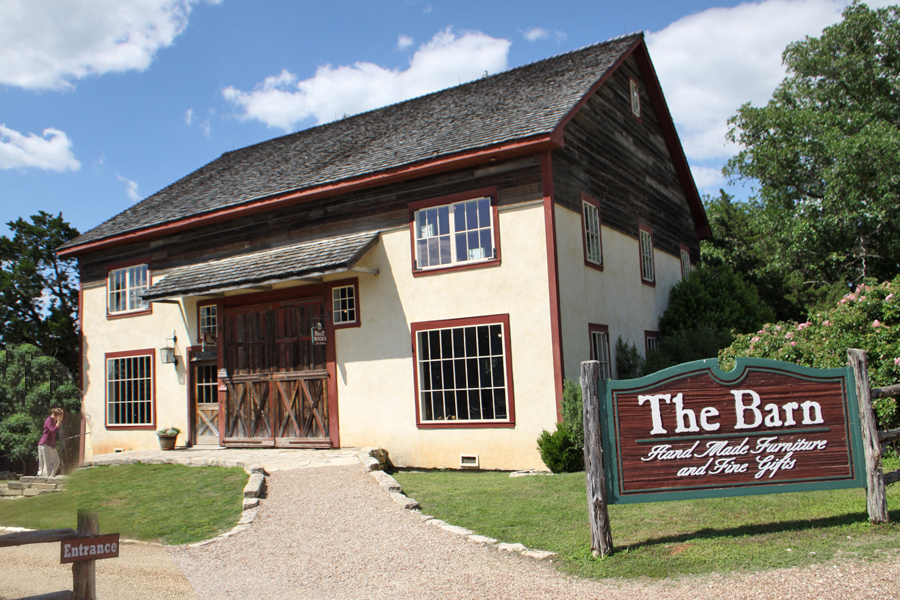 |
| The gift shop/visitors
shop in a old barn. |
|
We drove in and started our tour at the
Visitors Center, a 200-year-old chestnut and oak log cabin
originally built by Dutch settlers in New Jersey. It is still
held together by the original mortise and tendons and secured
with oak pegs instead of nails. Inside
you a taste of what you
will see throughout the community.
All of the handcrafted objects you see are lovingly made
by members of the community.
Nearby is their Cafe Homestead.
The members built it themselves. Joe Slack, who was our
guide on the Homestead explained how they kept the rustic
appearance but made the building efficient and snug. He told us,
"If you look closely, you can see that the logs are
smooth on three sides so
that the bottom and top stack well and the inside makes a flat
wall and the outside is left natural."
Joe
is a multitalented man. He builds and teaches guitar making as
well as owning and operating
the Red Wagon Barbecue trailer near the front entrance of
the Homestead.
We ate there after our tour and the food
was fantastic. Much of the items are either grown or baked here
on the Homestead and others are locally produced. The cheese was
especially good. Our waitress told us their homemade cheeses won
first, second and third place in the 2011 Cheese Festival in
Montreal.
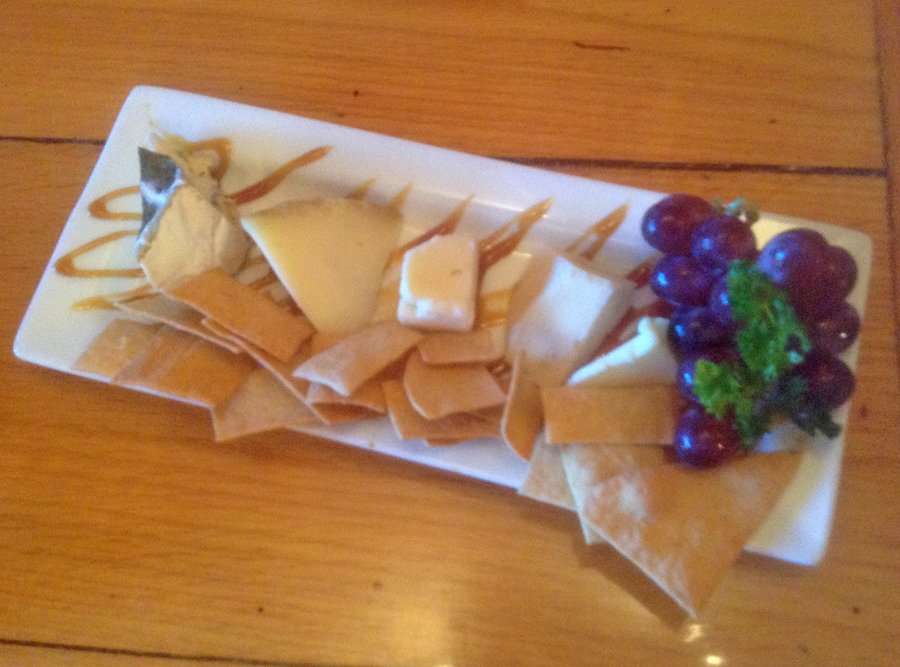 |
| Is that a gorgeous cheese plate? |
Every old village had its blacksmith and
Homestead Heritage is no exception. Caleb was quite serious
about his desire to be a good blacksmith. He wanted to learn to
make axes but no one in this country could teach him. He had to
go to Sweden to learn. We saw a few of his hand made axes and
agree, he learned well. He was hard at work at his forge when we
entered the shop. He demonstrated for us by making an beautiful
handmade nail.
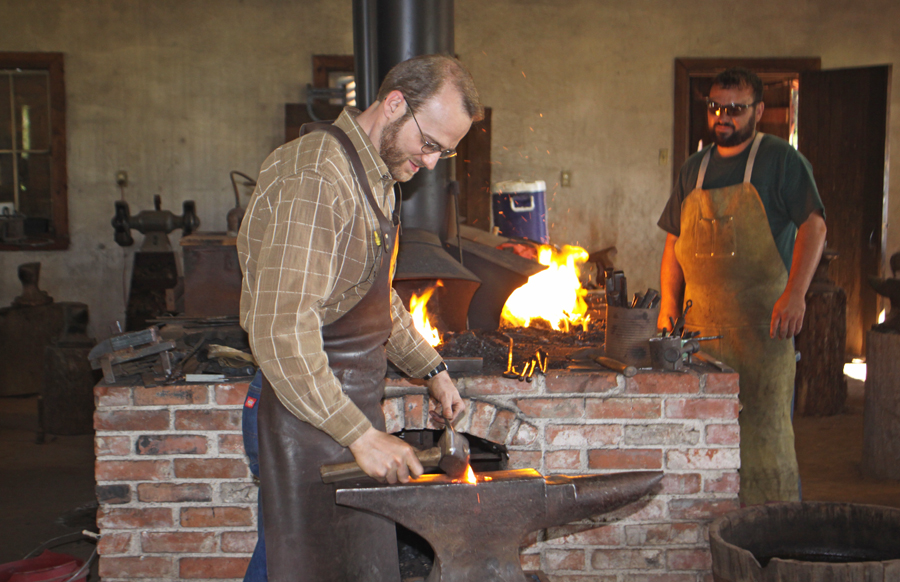 |
| Blacksmith and assistant making
tools |
Our next stop was the 1760s gristmill. It
was in full production mode when we entered. Joe explained the
workings of the mill which is water powered. He told us, "We
grow some of our own wheat here. We do 18 kinds of grain here.
The wheel is over 200 years old."
 |
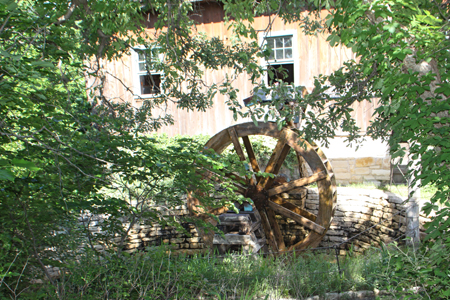 |
| The water
powered gristmill |
The water
turns the wheel |
The spinning and weaving building was
really enlightening. They grow their own flax to make linen.
They even grow colored cotton. One of the weavers showed me a
boll of brown cotton and told me they have planted a small patch
of green cotton for next year.
They do it all, spin the thread, weave the material and
create a beautiful piece of fabric art.
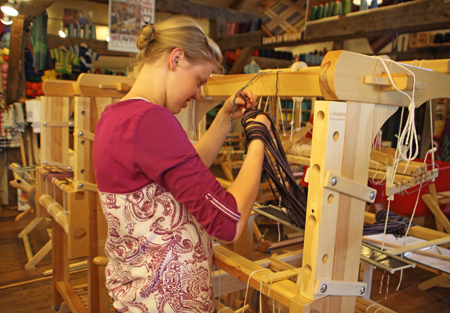 |
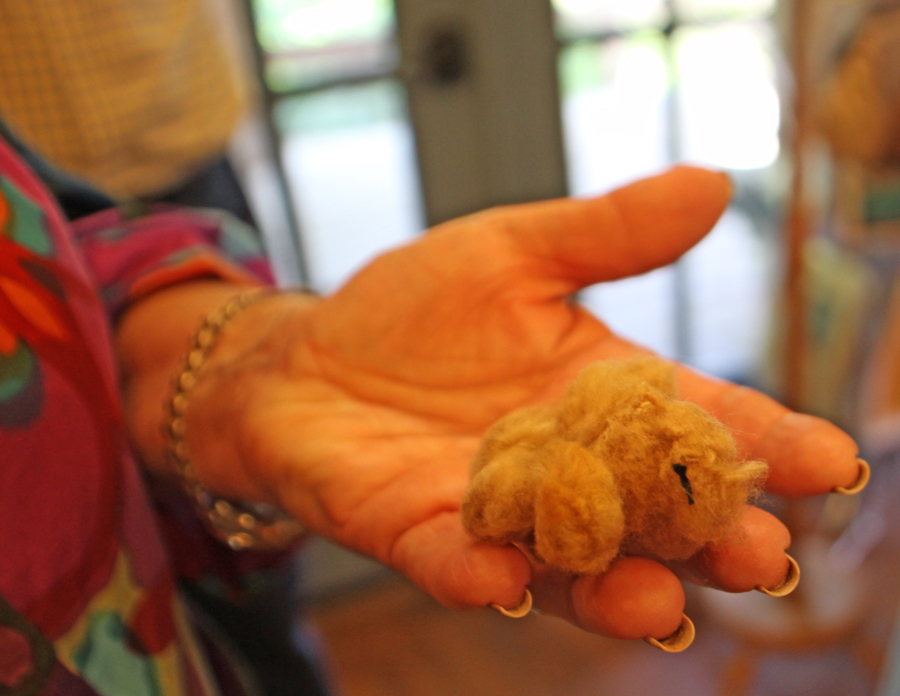 |
| A weaver hard at work |
A sample of brown cotton |
The woodworking shop turns carpentry into
an art. The furniture that they make is simply beautiful. Joe
explained, "Most of the work is done with hand tools not power
ones."
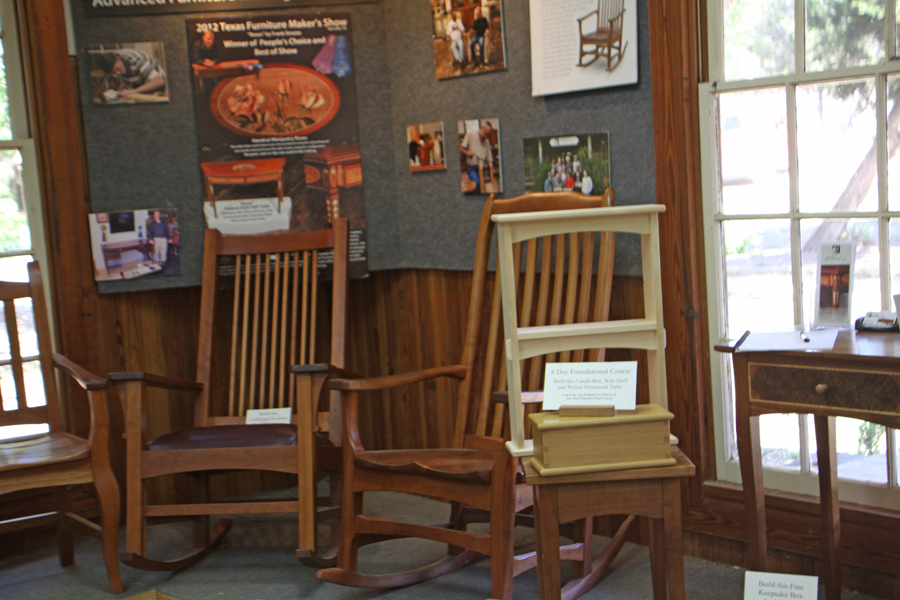 |
| Someof the items created in the
woodworking shop |
Their pottery is another example of turning
an everyday utensil
into an objet d'art. One item that caught my eye was their
sauerkraut fermenting crock. It had a trough under the lid that
you filled with water to prevent insects from entering while the
cabbage was turning into sauerkraut. They use a wood fired kiln
and get a beautiful glaze on their pottery.
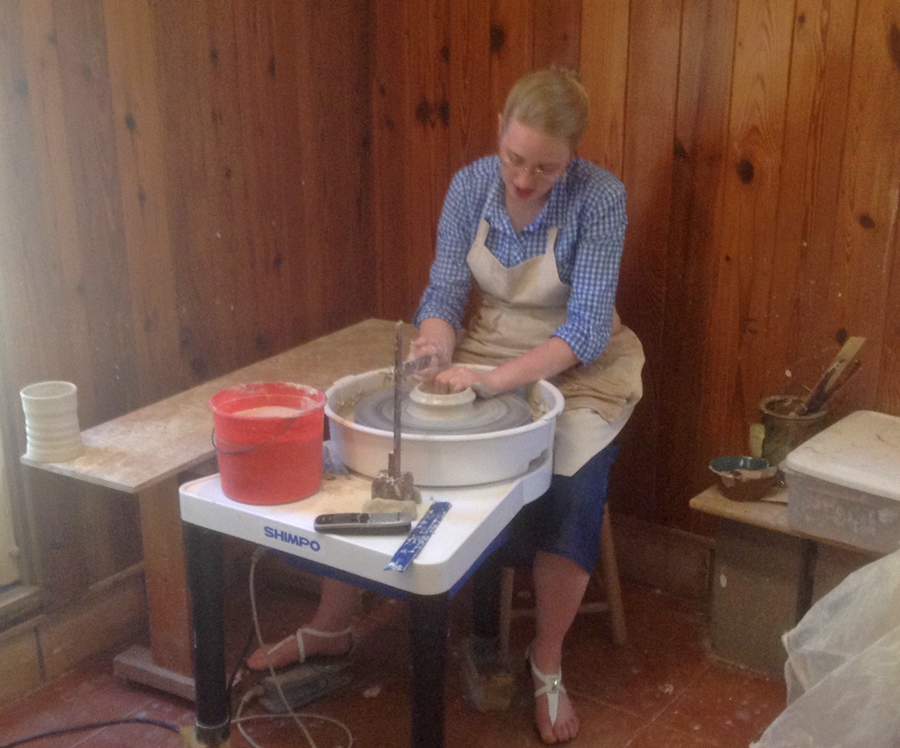 |
| A potter creating a work of art |
Homestead Heritage offers classes in most
of the crafts you see here so that if you wanted to build a
chair or weave a blanket you could find a class to fit that
skill.
What is most impressive to me is the
agricultural setup. Every place you look that is something
planted. There are flowers and beautiful bushes but so much of
the space is used for edible plants. Joe, explained "most of the
residents have their own home gardens ." Along with the normal
herb gardens,
vegetable beds and fruit trees, there have a very elaborate
system of aquaponics going on here. Aquaponics is a cross
between aquaculture and hydroponic. It's one of the newest
things in the sustainable movement but has ancient roots.
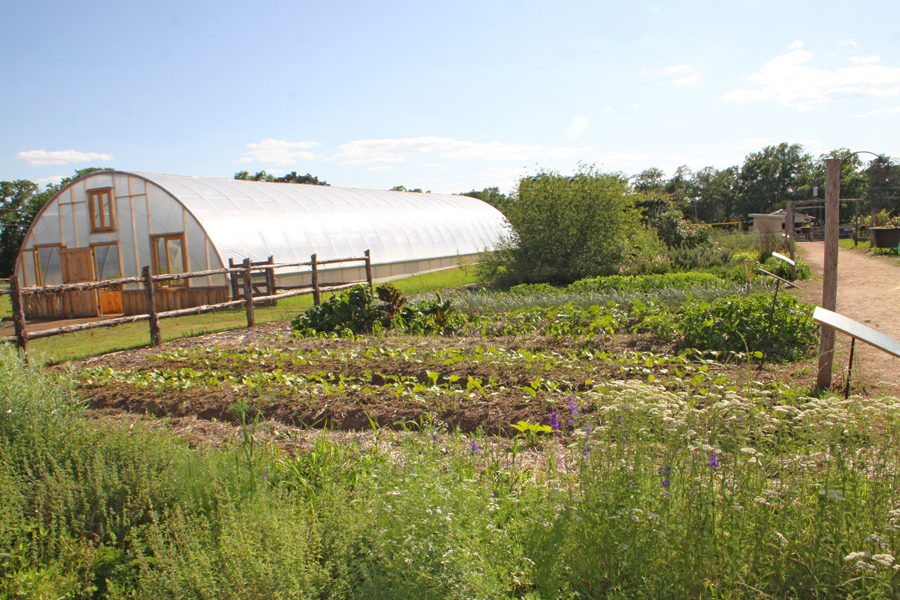 |
| A portion of the farming
operation |
Aztecs, Chinese and many ancient cultures
practiced this system where the waste products
of their farmed fish
supplied nutrients for hydroponically grown plants, which
re-purified the water that is then returned to the fish tanks.
This is the ultimate recycling operation. The aquaponics
greenhouse at Homestead Heritage contain multiple
plant
beds and a 4,500 gallon
main fish tank. It was the first time I ever saw such a system
in practice and I was impressed.
Another method well know to the Native
Americans is companion planting. The folks at Homestead Heritage
have made a study of this and know which plants complement each
other.
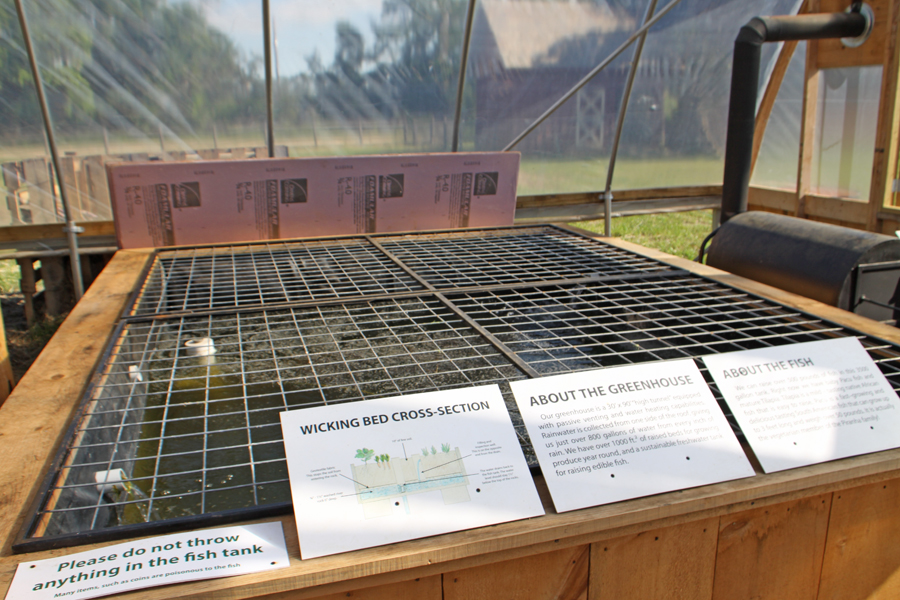 |
| The wicking beds |
The Homestead Heritage stages two big
festivals; Thanksgiving weekend and Labor Day. Either of these
time is great to visit and get an overview of the settlement.
They are also open year round to visitors Monday through
Saturday from 10 A.M.
to 6 P.M. Throughout the year they average about 60,000
visitors.
There is a religious aspect to this
community but that
is not an important aspect when looking at this place as an
agritourism experience. I spoke with Joe about this. When I
asked him about a person who might want to live and work at
Homestead Heritage but not want to join the religious part he
said in effect that it was not possible without a commitment to
both the lifestyle and the religion giving as his reason, "It's
all connected. We all need to be like minded."
I
would not feel comfortable with any religion telling me
how I was supposed to think, dress and live
but as a visitor and
observer, you can learn a lot about survival and the healthy way
to grow crops at Homestead Heritage. It's well worth a visit.
For more info:
www.homesteadheritage.com
|